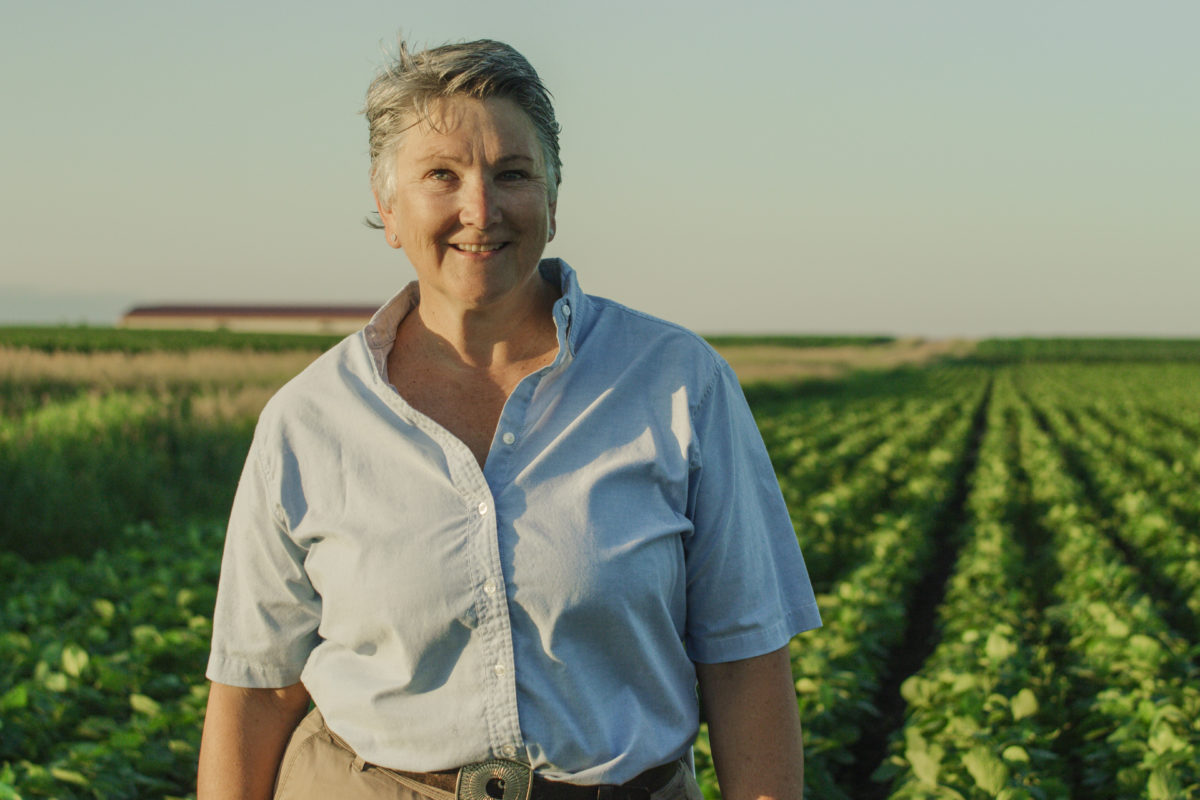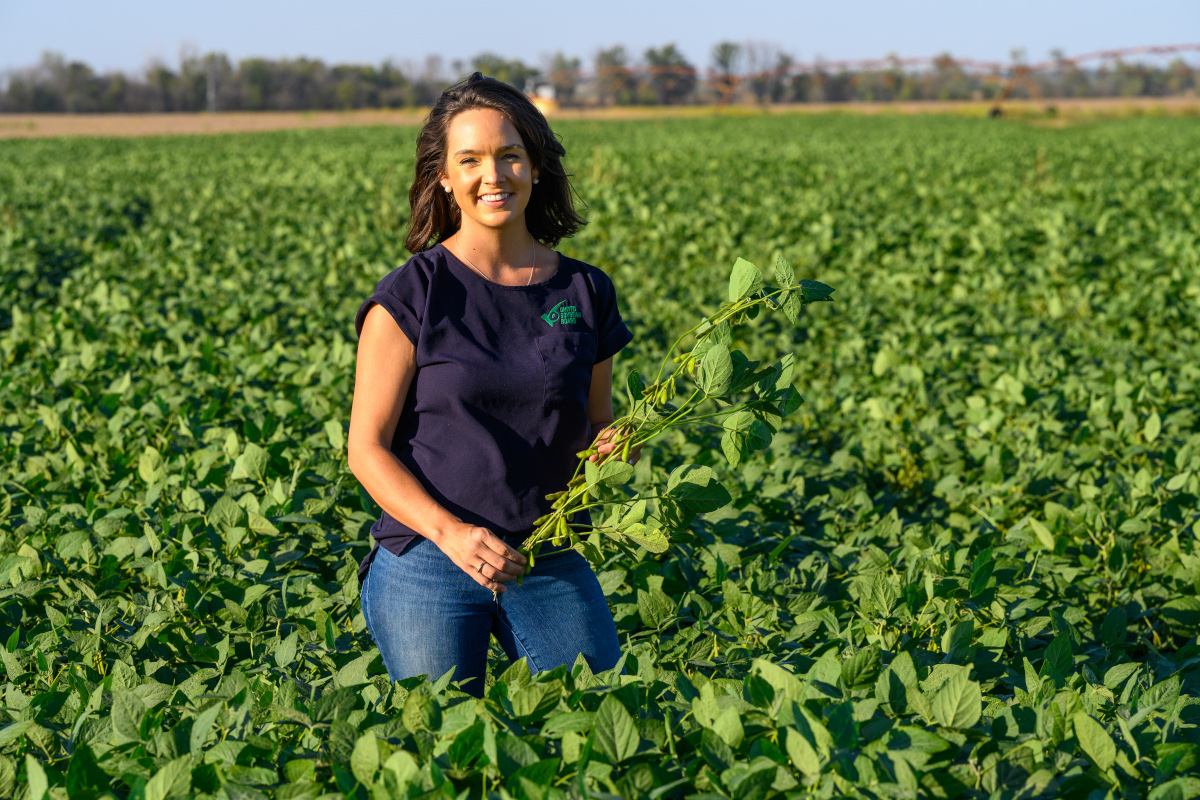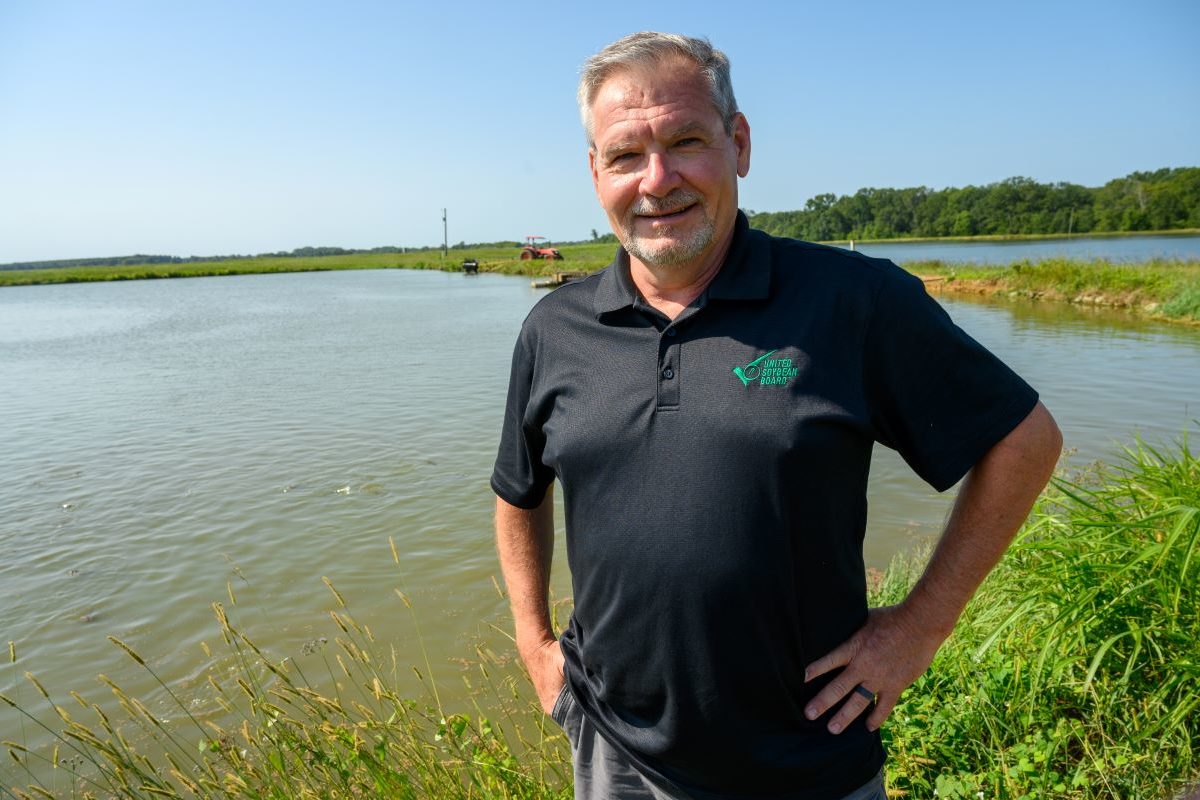Soy and Pork: Collaboration Across the Supply Chain

If you are ever in the upper Midwest, you’ll find the Krusemark Family Farm nestled in the plains of Minnesota. You will find rows of soybeans, barns of hogs, and sheds with equipment. You will meet Brad, AJ and Rochelle Krusemark.
For nearly a century, the Krusemark farm has stood in Trimont, Minnesota, with Rochelle and her family at the helm. Rochelle is also a six-year veteran farmer-leader for the soy checkoff and recently collaborated with a Minnesota grocery store chain, Coborn’s, to show shoppers where their food comes from by sharing her farm story. This showcase was part of a partnership between the soy checkoff and the National Pork Board to maintain trust in both pork and soy as sustainable, nutritious components of American diets.
How does growing soybeans and raising hogs work together on your farm?
It seems almost natural. We just grow corn, soybeans and hogs. We are lucky enough to have a processing facility in our county. We take a load of soybeans, then bring home a load of soybean meal for our hogs. Then, the manure from the hog barn fertilizes our fields and adds nutrients. It is really full circle here.
How do U.S. Soy and pork work together in general?
Soybean meal research and improvement have been priority checkoff investments in my time on the board. Collectively, we work toward improving genetics of our soybeans to be what our No. 1 customer, animal agriculture, needs. Animals are really our biggest consumer. We have always collaborated with pork, as well as poultry, because it just makes sense. The Minnesota Pork Producers Association office and the Minnesota Soybean Research and Promotion Council office are right next door! We cannot get much closer than that.
Tell me about your recent collaboration with Coborn’s.
I am passionate about what we do on our farm, and I just appreciate that consumers are interested in how their food is grown and where it comes from. It was fun to cooperate with Coborn’s, a local grocery store chain here in Minnesota, and other retailers and to share the story of our farm and so many other farms like ours. It was a pretty simple message to share — what we do every day and how we raise our crops that our animals can eat and that we can eat. It gave me an opportunity to say this is how we do what we do. I love how they also incorporated a recipe including pork into the segment I joined. It made me want to go make it!
Collaboration between the checkoffs, farmers and Coborn’s didn’t just grow a social media gathering. The showcase of U.S. soy, pork and soy farmers drove sales for Coborn’s. After Rochelle’s feature with Coborn’s, the National Pork Board and the United Soybean Board drove an 8.7% sale of soy-fed pork items increase month over month, and an 11.7% increase year over year for the chain.
How important is the collaboration between checkoffs?
I think collaboration between the different commodities is extremely important, especially for those producers that grow more than one commodity. We all work together very closely because we know that we are all partners in the food supply chain, and that is why it is so nice to work with groups like Coborn’s on the retail side. I think it is important that our consumers understand that we really are conscientious about how safe the food supply is, and that we provide a consistent and quality food supply.
What does that collaboration mean for you as a farmer?
Since we produce both pork and soybeans, collaboration is just natural to me. I guess you do not even think of it because you just promote both, and you realize that you cannot have one without the other. Pork and soybeans really do complement one another as commodities. That is why we have livestock, because our livestock enterprises benefit from our grain production and our grain production benefits from our livestock — the original form of sustainability. And then we all benefit from the checkoff.
If we were producing without the checkoff, we would have a lot of marketing to do on our own, and that is just not possible for each farmer to do. The collaboration works together just like the collaboration on my farm works. It is all natural.



